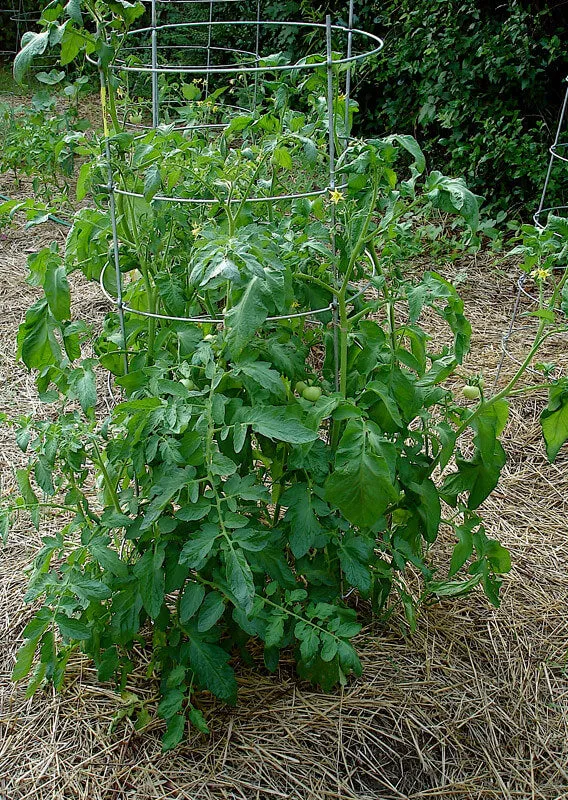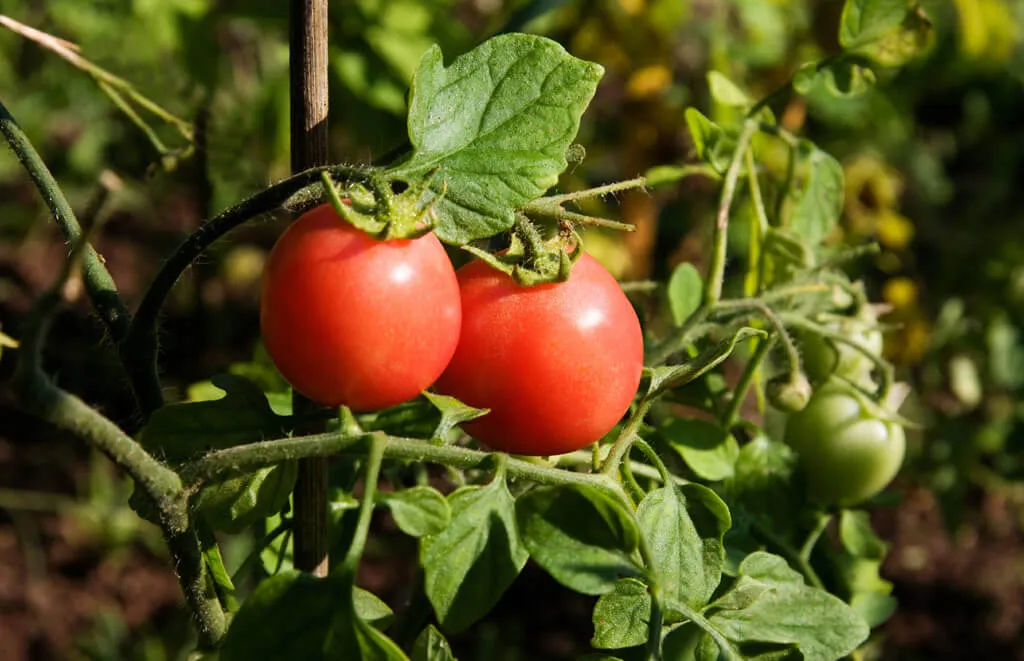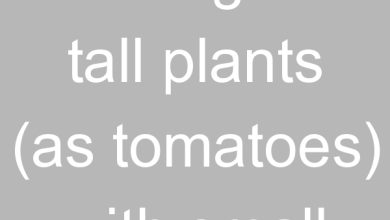How much heat do tomato plants give off?

Hot summer temperatures might put an end to your formerly fruitful tomato plants. When days hit 85°F to 90°F and nights hover above 75°F, tomato flowers often fail to pollinate, then drop — which in turn puts new fruit production on hold. The longer the heat lasts, the longer those tomato blooms will remain on hold. In brief, hot weather might cause your tomato harvest to be delayed. These are some tips for growing tomatoes in hot weather.
Contents
Choose the right variety
Heat-resistant tomato types such as Heatmaster, Sun Fire, Summer Set, and Phoenix may produce fruit even when temperatures rise. (See what other gardeners think about these types by reading the product reviews.) These tomatoes are sometimes referred to as “heat set,” or have heat-related terms or locales in their names. Another option is to take a cue from commercial tomato growers and plant determinate types, whose fruit tends to ripen all within in a short period of time earlier in the growing season—before the serious heat arrives. Whichever choice you pick, check for the Bonnie Plants® brand at the garden store to ensure you start with healthy, robust tomato plants.
Plant in the right place
Tomato tags recommend full sun, which is ideal for regions like as the Midwest, Northeast, and Pacific Northwest. In Southern California, the Deep South, Texas, and the Desert Southwest, though, where summer afternoons can get hot enough to fry eggs on the sidewalk, try to choose spots where tomatoes will receive morning sun, then filtered sun or light shade during the rest of the day. Create your own shade in regions where there is no natural shade (see below). Additionally, be certain that you are planted in rich, healthy soil. Add a few inches of Miracle-Gro® Performance Organics® All Purpose In-Ground Mix to existing garden beds. Fill pots with Miracle-Gro® Performance Organics® All Purpose Container Blend and top with native soil. Both have been treated with nutrient-rich old compost.
Make some shade
Gardeners in the warmest parts of the country (think Texas, Oklahoma, Georgia, Florida, Southern California, and the Desert Southwest) commonly employ shade cloth to keep tomatoes cool during the critical hours when tomato blossom pollination occurs (usually between 10 AM and 2 PM). Researchers have found that best yields occur with a shade structure that’s open to the east (no cloth on that side), so the plants can be bathed in morning sun, but shielded from hot afternoon rays. To make one, construct a basic frame around tomatoes out of wood or row cover hoops, then cover it with shade cloth (available at garden shops or online). Look for “50%” shade fabric, which cuts sunlight by half and heat by a quarter. Instead, try summer-weight row covers, which generally give around 15% shade. Of course, in areas where the sun and heat aren’t as extreme, shading tomatoes isn’t usually essential.
Add mulch
To help keep the soil wet, apply a 2- to 3-inch layer of mulch around tomato plants. Replace mulch as it decomposes in areas with extensive growth seasons (think late summer). Organic materials like straw, cotton hulls, shredded bark, chopped leaves, untreated grass clippings, or other locally available materials make great choices because they improve soil as they decompose. Another option is to use a bagged mulch such as Scotts® Nature Scapes®.
Pour on the water
As temperatures fall below 90°F, a tomato plant with a thick leaf canopy and a bounty of fruit enters survival mode—and need plenty of water to be healthy. Each morning, stick your finger an inch or so into the soil to check for wetness; if there isn’t any, it’s time to water. Keeping the soil wet reduces fruit breaking and aids in the prevention of blossom drop. (Too-dry tomatoes blossom earlier than well-watered tomatoes.) During the warmest days of summer, you may need to water plants daily or twice a day in locations with sandy, fast-draining soil, such as the Southwest, South Florida, and the Coastal South. Drip irrigation is perhaps the greatest and most cost-effective watering method no matter where you reside.
Pick fruit early
When temperatures persistently reach 95 degrees, tomatoes cease releasing red pigments, causing red fruits to ripen to orange. When high heat lingers with days above 100°F and nights over 80°F, most tomato ripening stops altogether. Fruit that has been left on the vine may have some color on the exterior but remain green on the interior. So if a period of intense heat is in the forecast, pick any fruit already showing hints of ripe color and allow it to finish ripening indoors.

Because of the thick covering of pine straw around this tomato plant, you’ll need to water it much less often.
 When a heat wave arrives, ripening fruit does better off the plant than on it. Since these Husky Cherry Red tomatoes have begun to change color, they’ll all ripen nicely on the windowsill.
When a heat wave arrives, ripening fruit does better off the plant than on it. Since these Husky Cherry Red tomatoes have begun to change color, they’ll all ripen nicely on the windowsill. Cherry tomatoes on the vine.
Cherry tomatoes on the vine.Watch for pests and diseases
Keep a particularly close look out for tomato bugs in the country’s warmest places, where high temperatures may last for days. Heat-stressed plants can’t defend themselves as effectively as they can in cooler temps, so address issues as soon as you see them. Since high temperatures may accelerate the development of several tomato illnesses, it’s best to remove any diseased or dead leaves as soon as possible.
Related Questions
-
Is 90 degrees too hot for tomatoes?
Tomatoes, contrary to popular belief, do not like heat. They would much rather have 75 to 95. When temperatures get too hot during the day (over 85 degrees) or are too hot overnight (over 70 degrees) many vegetables including tomatoes and peppers will drop their blossoms.
-
How much sun is too much sun for tomato plants?
We turned to Tomatomania’s Scott Daigre, author of the book Tomatomania!: A Fresh Approach to Celebrating Tomatoes in the Garden and in the Kitchen, who says “six to eight hours of sun [a day] is all a tomato plant needs so shade accordingly.” “The plant need shade to grow fruit.
-
Can tomatoes get too hot in greenhouse?
Even these sunbathers have a limit. Tomatoes, for example, see poor pollination and damage to immature fruits as temperatures climb above 32°C (90°F) by day and 24°C (75°F) by night. It emphasizes the need of staying cool as the temperature rises.
-
How often should you water tomato plants in 90 degree weather?
Avoid Overwatering Tomatoes in Summer Weather
Tomato plants need an inch or two of water every week, and a long soak is preferable than a little water every day. Frequent watering helps keep tomatoes from cracking. Too much water can suffocate the roots of plants.





